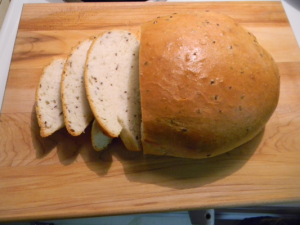Contents
Azodicarbonamide: What is it and Why is it in My Food?
Azodicarbonamide has become known as the “yoga mat” chemical. But, what is it really? It is a chemical compound added to flour as a bleaching and improving agent. It is also used as a foaming agent in the production some plastic products (such as yoga mats).
The fast food chain, Subway, made headlines recently when it stopped using the additive in bread. This move came after a successful online campaign and petition.
Description
Azodicarbonamide is a crystalline powder. It is yellow to orange red in colour. It is odourless. The full chemical formula is C2H4O2N4.

Common Uses
Azodicarbonamide is used to bleach and “improve” flour. It is banned in Europe but allowed in Canada and the U.S. Freshly milled flour has a yellowish colour. When stored for several months, the flour oxidizes. It becomes whiter and the baking qualities improve. Unfortunately, this process is slow and the results are inconsistent. Aging flour can be costly and time consuming for industrial producers. Azodicarbonamide is used to speed up the oxidation process. This allows companies to produce a more consistent product and get the flour to market sooner. Other bleaching agents include:
- Acetone Peroxide,
- Calcium Peroxide,
- Nitrogen Dioxide, and
- Chlorine Dioxide
other uses
It is used as a foaming agent in the production some plastic products. It’s use in yoga mats has received a lot of publicity.
It is also used in the rubber that forms seals on glass jars. In this case, there has been concern that it could break down and contaminate the food stored in the jars. The World Health Organization has called for data related to the possible health issues. They are particularly concerned about baby food. This is because babies eat most of their food from jars.
Health Issues / Side Effects
There really aren’t any known health issues caused by azodicarbonamide itself. The real concerns are with byproducts semicarbazide and urethane. Azodicarbonamide breaks down during the baking process. Both of these chemicals are are potentially cancer causing, but data is limited.
Still, Health Canada has released a statement insisting that it is safe to eat.
In Canada, azodicarbonamide is an approved food additive. It is permitted in bread, flour and whole wheat flour as a bleaching or dough conditioning agent at a maximum level of use of 45 parts per million (ppm) of flour. The permitted conditions of use of the food additive azodicarbonamide are set out in Health Canada’s Lists of Permitted Food Additives.
As with all food additives approved for use in Canada, azodicarbonamide underwent a thorough safety assessment prior to approval. Health Canada’s assessment determined that the body of scientific evidence supports the safety in use of azodicarbonamide, at the levels allowed under the Food and Drug Regulations. Further, the very low levels of semicarbazide that may be formed from the break-down of azodicarbonamide during baking would not be considered to pose a health risk.
Currently, Health Canada is not considering any changes to the approved food additive uses of azodicarbonamide.
E Number
The E number of Azodicarbonamide is 927.
Notes
If you’re concerned about azodicarbonamide, make sure you read ingredient labels. It is relatively easy to find products that do not list it as an ingredient. Look for unbleached flour.

Sources
- Subway agrees to end use of controversial chemical after food blogger Vani Hari’s protest
- World Health Organization Call for Data on Semicarbazide
- Opinion of the Scientific Panel on Food Additives, Flavourings, Processing Aids and Materials in Contact with Food on a request from the Commission related to Semicarbazide in food
Links
If you want to read more, try the following links..

Interesting to get the background on this substance, I had read about the campaign for Subway to stop using it.